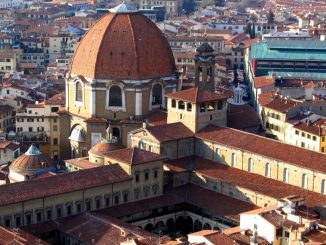
The yellow pavement (zhaltite paveta), located in the city centre, is a very well known walking route for tourists in Sofia. Walking its length (approximately one mile) will take you past a host of landmarks in the city, as it begins at the President’s office and passes by the Archaeological Museum, former Communist Party House and the National Bank. It then follows the route that will take you to the National Art Gallery, National Ethnological Museum and Grand Hotel. This hotel has a very interesting café which is modelled on those one would find in Vienna.
Once you are finished sightseeing here, the yellow pavement continues on to the Russian Church and the Military Club (Voenen Klub). The latter is a hotspot for bars and restaurants, which are to be found near the very pretty Italian and Austrian embassies and the Bulgarian Academy of Sciences.
It ends at Parliament Square (Narodno Sabranie) and Yablaski House. Beside the crossroads is Sofia University and the metro station, where the Sofia Tourist Information Centre is to be found.
Alexander Nevski Cathedral and St. Sofia Church are located on the highest point in Sofia. With its golden dome, the Alexander Nevski Cathedral, where Orthodox Christians worship, truly is a sight to behold. It is amongst Europe’s largest Orthodox Christian buildings. Underground is a crypt which houses the Iconographic Museum. The St. Sofia Church is nearby – the namesake of the capital. This basilica is situated in a garden where the St. George monument and Ivan Vazov monument are to be found. Walk behind St. Sofia Church and you will find Moscovska Street. This street is unique in having some of the most attractive buildings in the city. They used to be the residences of the upper classes but nowadays they operate as eateries and a range of other businesses. The International Art Gallery is also on this street.
The National Theatre, which dates from 1907, is without doubt one of the finest structures in the capital. The Anglo-American attacks razed it to the ground during World War II but it was subsequently rebuilt. Outside are the very peaceful Gradskata Gradina gardens. People watching while sitting beside the fountains is a very enjoyable way to pass an hour or two. The City Gallery is also found here, as well as a variety of quality open air cafés and the Grand Hotel.
Sveta Nedlya Square has the greatest concentration of religious buildings in Sofia. Near here is the Alexander Nevski Cathedral and the Theology Department of Sofia University. The Banya Bashi Mosque and the Synagogue are also around the corner. If you want some retail therapy after taking in the culture of these beautiful buildings, the Halite shopping mall and TZUM department store are also nearby. If you want to base yourself here, look no further than the Sheraton Sofia Hotel Balkan. Behind the hotel is the oldest building in the capital – the St. George rotunda, built around 300 AD.
Vitosha Boulevard begins at Sveta Nedelya Square and is where fashion lovers go to shop until they drop. There are also some very good cafés in which to pick up some refreshments along the way. It leads to the Vitosha Mountain, from which you can look out over the city. The National Palace of Culture (locally termed the NDK) is the highlight of the Boulevard. Many concerts and other notable events are held, due to its situation in a large green area. An overhead walkway links the NDK Park to the South Park and Hilton Hotel.




